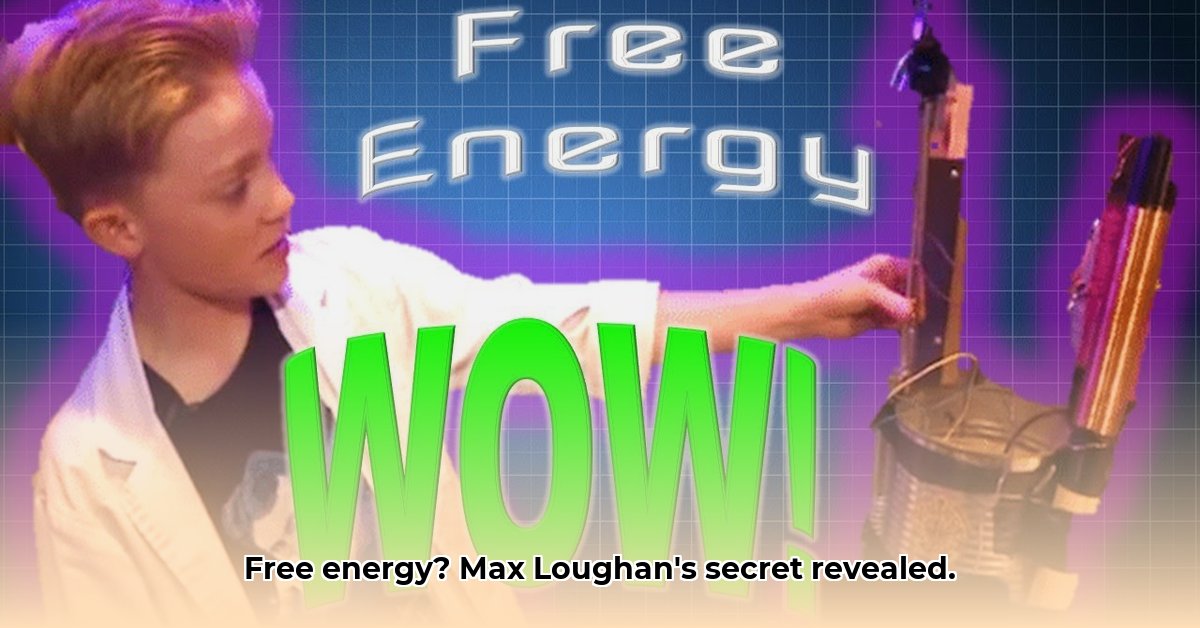
Max Loughan's Claims: A Free Energy Revolution?
Max Loughan, a teenager, gained significant online attention for claiming to have invented a device capable of harvesting ambient electromagnetic energy. Initial reports and videos showcased small-scale prototypes powering LEDs, leading to widespread speculation about a potential energy revolution and Loughan's potential net worth. However, these claims lacked scientific backing, and no independent verification of his device's functionality has surfaced.
The Missing Person Narrative: Dissecting the Misinformation
A false narrative emerged claiming Loughan had disappeared. Fact-checking websites and journalists investigating the story confirmed that this was completely untrue; Loughan remains enrolled in a major US university. This incident underscores how easily misinformation spreads online, highlighting the need for critical media consumption.
The Science Behind the Claims: A Critical Analysis
Loughan's purported invention has not been subjected to peer review or independent replication. His prototypes only powered a few LEDs, far short of the energy revolution he claimed to have achieved. The scientific community requires rigorous testing and evidence before accepting such groundbreaking claims. Without this verification, Loughan's assertions remain highly speculative.
Max Loughan's Net Worth: Fact versus Fiction
Determining Loughan's net worth is currently impossible. The lack of any commercially available products or verifiable income stemming from his claimed invention means any estimate would be pure speculation. This reinforces the crucial lesson that online notoriety does not equate to financial success. Real wealth demands tangible income and demonstrable success.
Free Energy: Hype versus Reality
The allure of "free energy" is undeniable, promising a solution to global energy challenges. However, many claims of "free energy" inventions, including perpetual motion machines, lack a scientific basis. They violate fundamental principles of physics such as the law of energy conservation. Loughan's case serves as a potent cautionary tale, emphasizing the importance of skepticism and evidence-based thinking.
How to Verify Claims of Free Energy Inventions Online
Key Takeaways:
- Loughan's claims lacked sufficient evidence and scientific validation.
- The incident highlights the importance of critical thinking and media literacy.
- Scientific scrutiny and independent verification are critical for evaluating technological breakthroughs.
Verification Steps:
- Peer-Reviewed Publications: Look for evidence published in reputable scientific journals.
- Independent Verification: Has any independent entity replicated the results?
- Examine the Methodology: Understand the principles behind the invention. Are they scientifically sound?
- Source Credibility: Evaluate the expertise and track record of the source.
- Avoid Sensationalism: Be wary of exaggerated or hyperbolic claims.
- Use Fact-Checking Websites: Consult reputable fact-checking organizations.
- Understand Basic Physics: Claims violating fundamental laws of physics are inherently flawed.
The Limitations of Ambient Energy Harvesting
While harvesting ambient energy is a valid scientific pursuit, the energy density of readily available sources is exceptionally low. Current technology cannot efficiently extract meaningful amounts of energy from ambient sources like electromagnetic radiation. The energy expenditure required to capture these minuscule amounts far outweighs the energy potentially obtained. Therefore, Loughan’s claims of significant ambient energy harvesting remain highly improbable.
[https://leadstories.com/hoax-alert/2022/12/fact-check-max-loughan-not-missing-about-six-years-energy-harvesting-device-creator-was-in-school.html]